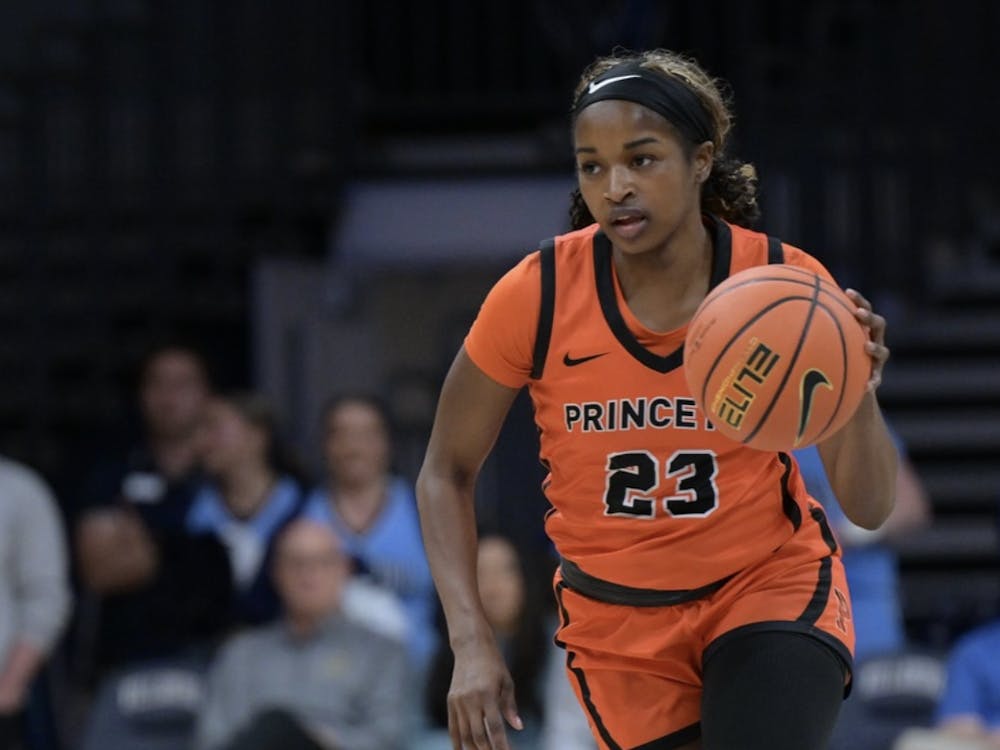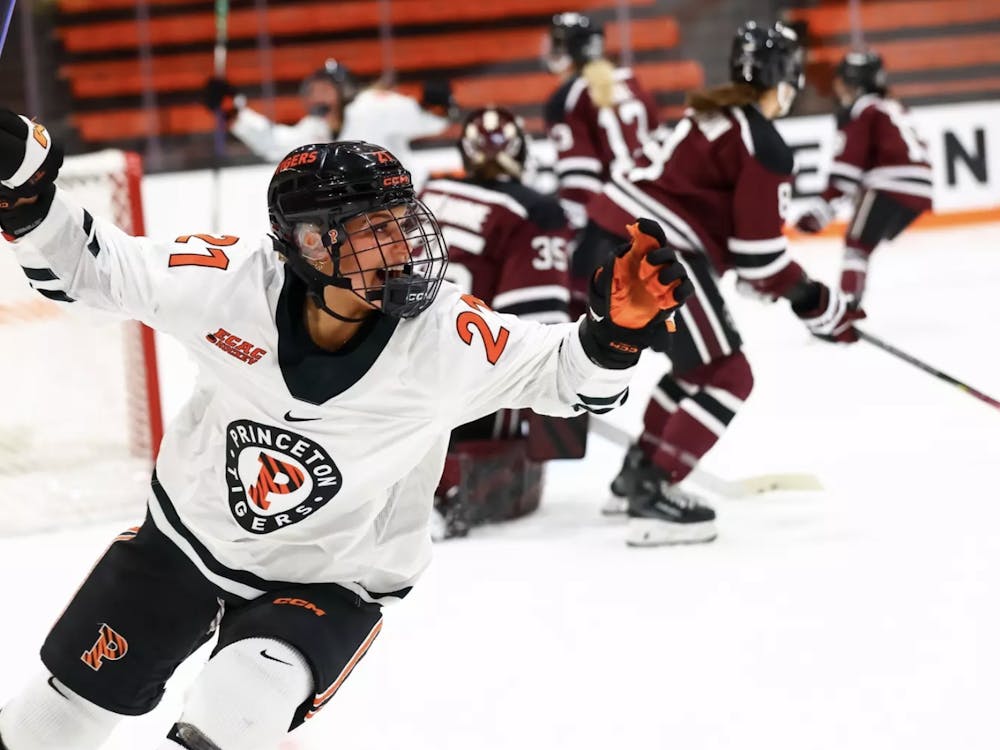This year’s NCAA men’s basketball tournament was one of the best ever. That might sound like an outright lie to some people whose favorite team lost early or whose bracket showed more red than the South on election day. But let's walk through some stats. Best is obviously a subjective term, but here are my three parameters for it. Number one has got to be close games. Everyone likes to see a good nail-biter regardless of the teams involved, and those contests are the cornerstone of a good tournament. The right mix of chalk and upsets is also important. Everyone loves a Cinderella, but people also like to see the best teams on display. Finally, something rare should happen. There’s nothing cooler than saying, “Teams with seeds this low have never met in the championship game” or “Wow, a team has not survived this many consecutive close games in 30 years.”
March Madness started with to a bang with four overtime games on the first day of the tournament, a single day tournament record. Another extra period followed the next day to break the record for the round of 64. Although there would be no more overtime games, the tournament still had plenty more competitive games in store. The average margin of victory in the Sweet 16 was a mere seven points, by far the lowest in the last five years. The Elite Eight games were decided by an average of five points, also the slimmest margin in the last five tournaments. In the 15 games played from the Sweet 16 to the Championship, just one was decided by more than 10 points. I’m not sure where that stacks up historically, but it's a great time to be a fan when 93.75 percent of the most important games are still competitive inside the last five minutes.
The balance between favorites and underdogs is very delicate. Everyone has their own personal preference as to the ratio of Davids and Goliaths, but some middle ground is probably most agreeable and I think this year had it. No. 14-seeded Mercer over Duke in the first round was the biggest upset of the tournament but was also the only upset involving a seed lower than No. 12, so we still got to see the best teams keep playing. Three No. 12 seeds and two No. 11 seeds won, providing more excitement without costing the field any great teams. The round of 32 was when giants really started falling. Wichita State, Kansas, Villanova and Syracuse were all three seeds or better and all lost. But as Malcolm Gladwell told us in his most recent book, if you dig deeper, the matchups might not be all that lopsided. The Shockers and Wildcats had not beaten a quality opponent all year, and the Jayhawks and Orange limped into the tournament.
The Sweet 16 gave us some intriguing matchups: Double-digit seeds Dayton and Stanford going at it, the intrastate rivalry rematch between Kentucky and Louisville and a top eight quality matchup between Virginia and Michigan State. The Elite Eight was split perfectly with four No. 1 and No. 2 seeds and four teams seeded fourth or lower. No. 11-seeded Dayton was the lone mid-major and true underdog, but I was glad to see the No. 1 overall seed Florida take its rightful place in the Final Four. The national semifinals also held a 50-50 split between top seeds and “underdogs,” though in one matchup there was some ambiguity over who was playing what role.
Wisconsin may have appeared the favorite based on its No. 2 seed, six lower than Kentucky’s. But Kentucky was led by the much ballyhooed coach John Calipari and was the preseason number one on account of its ridiculously talented freshmen. The uncertainty led to a game that truly had it all. Each team had at least one significant run, but they mostly traded baskets. The Wildcats needed Aaron Harrison to sink a late three-pointer for the third straight game to squeak out the 74-73 victory.
I’ll be honest — I was hoping for a Florida-Kentucky final to keep the David and Goliath dichotomy alive, but the Kentucky-UConn matchup more than fulfilled my third criterion. Both teams made a lot of history along the way to add to the already fantastic tournament.
UConn’s run was almost over before it even started. The Huskies needed a minor miracle to force overtime against St. Joe’s in their first game. The team’s modus operandi became clear in the next few wins over Villanova, Iowa State and Michigan State. Shabazz Napier and company held virtually no advantage in shooting or rebounding, but they were rock solid from the free throw line. UConn made over 90 percent of its free throws in the last five minutes and that proved to be the difference in all of its games. When they beat Florida, the Huskies became the first ever seven seed to advance to the championship game.
Kentucky, meanwhile, had an even tougher road and had even closer games. The Wildcats won their five games by a combined 18 points, a record low for a championship game participant. The Wildcats also had to survive a four-game gauntlet of high seeds: number one Wichita State in the second round, followed by the tremendously underseeded Louisville Cardinals and No. 2 seeds Michigan and Wisconsin. Each of those schools was ranked in the top seven of the AP poll at some point in the season and all were in the top 12 heading into the tournament. Kentucky ended up as just the third No. 8 seed to appear in the final. Never before had both championship participants been seeded lower than three. The sum of the participants’ seeds had never been greater than 11.
Yet, despite both team’s apparent underdog status, each has rich tournament tradition. Kentucky has won eight national titles, second only to UCLA. UConn has won three since 1999, more than any other school. Both play in power conferences and were ranked in the single digits at some point this season. NBA talent flows through each school, but especially Kentucky, where each season sees a new Fab Five in Lexington.
The actual championship game will not go down as one of the greatest ever, but it still provided an apt ending to this great tournament. It was a low scoring grind, just as UConn’s last two games had been. The teams shot barely over 40 percent combined. The Huskies managed to negate Kentucky’s Julius Randle and its other prolific rebounders. In the end, it came down to free throws, and Kentucky managed just 54.2 percent. UConn was, fittingly, a perfect 10 for 10 to wrap up Kevin Ollie’s first full season as head coach.
Yet for all this talk about the men’s tournament, it’s the women who may have had the more historically rare championship game. UConn and Notre Dame, who went a combined 76-0 this season, squared off last night in Nashville, Tenn. Never before have two undefeated teams met in the championship game for either gender. There have only been 12 women’s teams ever to reach the final game undefeated and two managed the feat in the same year. You’d be hard-pressed to find two teams at any level of any sport which were as impressive as these squads and ended up meeting in the championship. The ______ came out on top by a score of __ to __, earning the program its __th title. (@copy editor, the previous blanks will be filled in later tonight after the game)








